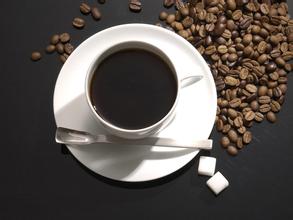Rose Summer Coffee Water Temperature Extraction Time Brewing Method Taste Flavor Description
Taste: probably because of Ethiopian beans, just a little bit of Yega Xuefei feeling, but suddenly there is a strong fruit acid, and then a large number of aromas such as flower aroma, spice, cinnamon, peppermint and other aromas emerge and rush into the nasal cavity, the tension of the aroma is very strong and vigorous, the rhythm is far-reaching, the taste is layered, and the aftertaste is endless. Maybe I use too many rhetorical words, but it is true. I was a little picky when I drank fine coffee such as Blue Mountain, Kona, civet and so on. I complained to my friends at this time last year. I haven't had any beans that I feel amazing for a long time, and this cup of summer is enough to move a coffee glutton.
The dry aroma of Rosa is very bright, with aromas of rose and jasmine, with aromas of pomelo and citrus, light baked with nutty aromas, and wet aromas with hazelnut and more floral characters. In terms of taste and flavor, compared with the previously rising aroma, it may be slightly mild and subtle in the early stage, and the flower and fruit flavor will gradually increase as the temperature drops, and the cold aroma is excellent (sweet preserved fruit, rose fruit, orange glaze jam, strawberry jam, silk pine, cherry, vanilla and rose gradually fade, leading to lemon-flavored fruit). This is a coffee that can be praised by a large number of adjectives, the sweetness of the silk, which is testing the brightness of this coffee, especially when it is lightly roasted. She is so extraordinary that the fruity and floral elements are like Yega Xuefei from Africa and Ethiopia on the other side of the world. Of course, these are all old news now. Some small farms also get summer roses and are eager to grow their own roses.
However, the results are different, and this "star" variety seems to have different tastes in different geographical locations due to the influence of weather, soil and altitude. However, in the Aktenango region, we see typical rosy summer features: slender beans, changes during baking, and the elegant and unripe flavor of flowers, tropical fruits, and strong sweetness in the cup; these are the feelings that Rosa has always given us. Properly baked, they make you feel like sipping the fragrance of a bouquet of flowers. You may not know the story of Rosa, an ancient native species from Ethiopia that was brought as a coffee sample to a coffee experimental garden in Costa Rica and distributed to several small farms for small-scale trials.
Not many people paid attention to Rose Summer until one day, Esmeralda Manor in Panama separated it from other varieties and won the national coffee competition.
In 931, it was exported to Kenya in obscurity from Geisha Mountain Mountain in southwestern Ethiopia, wandered to Tanzania and Costa Rica, was transplanted to Panama in the 1960s, and then went through nearly half a century before it became a blockbuster, beating the victorious armies of Bourbon, Kaddura, Kaduai and Tibika to win the first prize of the Panamanian National Treasure Bean Cup Test Competition in 2005, 2006 and 2007. In 2007, the International famous Bean Cup Test sponsored by the American Fine Coffee Association (SCAA) won the championship again, and the bidding price was sold at US $130 per pound, setting a record for the highest price in the history of competition beans. It is reported that the later Panamanian national treasure bean competition will be divided into two groups: Rose Summer and non-Rose Summer, so as not to be robbed of the brilliance of other varieties by Rose Summer. Rosa is a member of the Tibika family, but it became famous more than 70 years after leaving Ethiopia, and fulfilled the saying that Ethiopia is a treasure trove of Arabica genes. Giving a variety to go abroad is enough to stir up trouble in the coffee market.

Important Notice :
前街咖啡 FrontStreet Coffee has moved to new addredd:
FrontStreet Coffee Address: 315,Donghua East Road,GuangZhou
Tel:020 38364473
- Prev

Classification and Taste characteristics of Ecuadorian Coffee beans introduction to Flavor description treatment of varieties in producing areas
The unique roasting technology Bravo coffee R & D team has been invited by the Ministry of Labor and Social Security to compile the "Barista Professional Standard textbook". The R & D team keeps abreast of the latest information and technology of the international coffee industry and constantly exchanges and interacts with our domestic counterparts, ensuring our R & D and technological advantages. Bravo Coffee production Department introduces the most advanced Italian Pet in the world.
- Next

Isn't the coffee made with medium fat milk? Which kind of milk is the best?
The method of double-layer milk bubble cup 1. Prepare the milk (also whole milk) and heat the milk to 60 ~ 70 degrees. Milk can be directly placed in a milk bubble to be processed on a gas stove or induction cooker, or it can be heated in a porcelain cup or glass in a microwave oven. If you heat it in a microwave oven, because you want to pour it into the foam machine, it will absorb a certain temperature, and the heating temperature should be slightly higher.
Related
- Detailed explanation of Jadeite planting Land in Panamanian Jadeite Manor introduction to the grading system of Jadeite competitive bidding, Red bid, Green bid and Rose Summer
- Story of Coffee planting in Brenka region of Costa Rica Stonehenge Manor anaerobic heavy honey treatment of flavor mouth
- What's on the barrel of Blue Mountain Coffee beans?
- Can American coffee also pull flowers? How to use hot American style to pull out a good-looking pattern?
- Can you make a cold extract with coffee beans? What is the right proportion for cold-extracted coffee formula?
- Indonesian PWN Gold Mandrine Coffee Origin Features Flavor How to Chong? Mandolin coffee is American.
- A brief introduction to the flavor characteristics of Brazilian yellow bourbon coffee beans
- What is the effect of different water quality on the flavor of cold-extracted coffee? What kind of water is best for brewing coffee?
- Why do you think of Rose Summer whenever you mention Panamanian coffee?
- Introduction to the characteristics of authentic blue mountain coffee bean producing areas? What is the CIB Coffee Authority in Jamaica?

